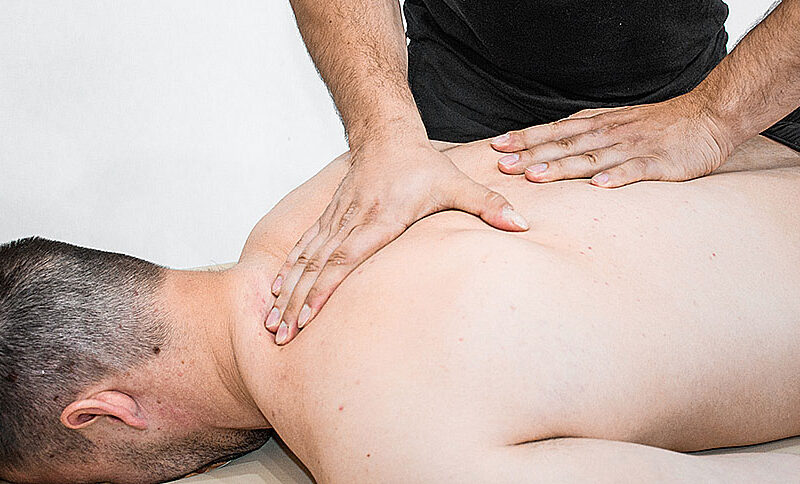Bone fractures are a very big deal and as much as they hurt, they can take an even longer time to heal, if you’re not too careful. So, you must go to an orthopedic surgeon for diagnosis and treatment. Here is everything you need to know about clavicle fractures.
Clavicle Fracture
The clavicle is also known as the collarbone. It is located between the sternum (rib cage) and the scapula (shoulder blade). It is one of the most important bones in your neck and it also has numerous important nerves, blood vessels, and muscles around it. The clavicle is the bone that attaches the arm to the shoulder and the rest of your body and it is also responsible for some movements that engage the shoulder and arm.
A clavicle fracture is a fracture or break in the collarbone. The break in the bone usually occurs along the middle or the side of the shaft, since the collarbone can be long and lean, there are a lot of points where fractures can happen. The fracture can also occur at the part where the shoulder meets the bone and it’s one of the most critical areas because this fissure takes the most time to heal.
Clavicle or collarbone fractures are really common to occur in people. They can occur in children and adults alike and the main reason for these fractures is falling, with the clavicle taking the brunt of the impact. This can cause a break or fracture in the bone and it can also lead to immense pain and limited movement.
Causes Of Clavicle Fracture
- The main and only cause of clavicle fracture is falling on your arm or shoulder, but the way a person falls can also be pretty characteristic and it can affect different sides and areas of the collarbone.
- Falling on the ground with an outstretched arm can lead to a lot of impact on the shoulder and since the clavicle is in close vicinity of the affected area, then collarbone fractures will be the norm.
- Hitting your shoulder hard with something like a wall or the ground can also lead to clavicle fractures and along with the collarbone, the shoulder cap can also fracture, or worse, break.
- A car collision can also cause problems in the collarbone and if you hit your head, neck, or shoulder hard, then it can lead to a very bad fracture.
- A lot of the time, in infants that are being born, their bodies can get stuck in the birth canal and since their bones are extremely weak and malleable, this action can lead to the dislodging of the collarbone, and the baby can be born with fractures, but there’s nothing to worry about because it can be fixed easily.
Symptoms Of Clavicle Fracture
Here are some very common symptoms of clavicle fractures.
Pain
One of the most obvious symptoms of clavicle fractures is pain. Once you get hit by something, but you’re not sure whether the bone is broken or not, it can lead to a lot of pain in the arm and shoulder.
Sagging Shoulder
Another common symptom is the sagging of the shoulder. If you look at your shoulders, you will see clearly that they are broad and are in a straight line from one side to another, but with injuries like clavicle fracture, the affected shoulder will droop down and sag. You can see the difference clearly if you look at your affected and perfectly fine shoulder.
Dislocation In The Arm
There might be some sort of dislocation in the arm, near the neck. Sometimes, the fracture is not just a break in the bone, but it can also lead to a full-on dislocation of the bone and it can be visible through your skin. This can be caused by a very bad accident or an extremely impactful fall that has caused the bone to completely wedge out of its original place.
A Feeling Of The Bones Getting Grinded When Moving The Arm
Whenever you try to move your arm, you will feel like your bones are getting grinded and are rubbing against a tender part of your muscle or even another bone and this can cause extreme discomfort and pain, which is why most people avoid too much movement after the injury.
Bruised Arm or Shoulder
There might be bruises on the arm or shoulder where you took the hit and that’s because of the nerve damage. Since there are a lot of blood vessels and nerves around the clavicle, bruising is also the norm because a great fall on the ground can constrict the blood vessels and can lead to clogging, ultimately leading to bad bruising and swelling.
How Is Clavicle Fracture Diagnosed?
A clavicle fracture is pretty easy to diagnose. It can be done in two ways:
Physical Examination
A physical examination is enough to determine that there is a presence of a fracture in your shoulder or collarbone. The doctor will feel the area around your shoulder where you feel pain and discomfort and if there’s a physical deformity visible from the skin then there’s no doubt that it’s a fracture in the collarbone.
The doctor can also feel around the area, for broken bones and any shatters in other parts of the shoulder. Even if you go to a hand injury doctor Woodbridge, they will check other bones as well to find out the bone that is fractured.
X-Ray
The other way by which an official diagnosis can be made is through X-rays. X-rays are pretty good at detecting where exactly the fracture is and how the bone is broken in general. An X-ray gives a clear image of what you’re dealing with and it’s a necessary step in properly diagnosing a shoulder or neck injury.
To find more damage and just to be safe, your doctor can conduct an entire shoulder X-ray to look for other associated injuries so that a proper treatment plan can be followed.
Treatment Of Clavicle Fracture
Here are some treatment options for a clavicle fracture.
Surgery
Several types of surgeries can be done to fuse the bone back in place. It can be done by pins and screws or plates and screws and these methods are two of the most common ones used in treating a broken collarbone.
The rundown of this surgery is that the bone is first relocated back into place, and then to hold it there, plates/pins and metal screws are used so that the bone won’t budge.
Arm Support
You can use an arm support to limit the movement of your arm until the fracture heals completely. This is a great tip if the fracture isn’t too severe and there is no dislocation either.
Pain Medication
Pain medications are also a lifesaver, especially if you can’t endure the pain much longer. You can take 2 to 3 doses of medication in a day to alleviate yourself from the excruciating pain.
Physical Therapy
Physical therapy also helps with sustaining the mobility of the shoulder and arm, especially if it’s been dormant for a while. Light movement can enhance the overall condition of your arm and you’ll feel better.
Conclusion
Clavicle fracture is one of the most common neck and shoulder injuries. Now you know exactly what these fractures are, and how they can be caused, diagnosed, and treated by shoulder specialist Woodbridge, they may help you in the recovery.


